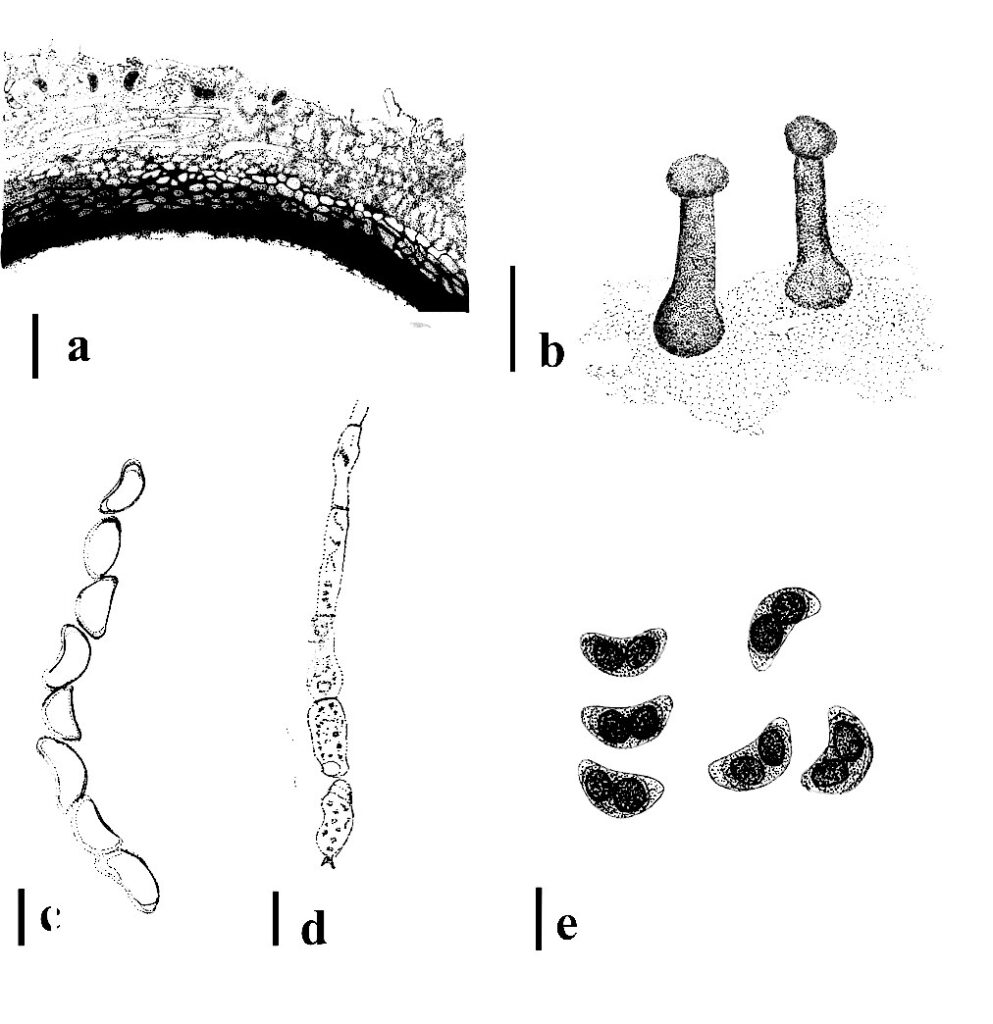Fungalpedia – Note 43 Bellojisia
Bellojisia (Höhn.) Réblová
Citation if using this entry Noorabadi MT et al. (2023) New genera in 2008-2009. Mycosphere (in prep)
Index Fungorum, Facesoffungi, MycoBank, GenBank, Fig 1.
The monotypic genus, Bellojisia (Höhn) Réblová was established by Réblová (2008), to accommodate Bellojisia rhynchostoma (Höhn.) Réblová (= Jobellisia rhynchostoma (Höhn). Barr) as the type species. It is saprobic on wood. Based on phylogenic analyses of LSU sequence data Jobellisia rhynchostoma formed a distinct clade from the other species of Jobellisia in Jobellisiales and this species was placed in Lasiosphaeriaceae, Sordariales (Réblová 2008), Bellojisia rhynchostoma is different from other species of Jobellisia based on phylogenetic analysis and some morphological characters such as its unique reniform ascospores, deliquescing asci, ascal apex and the structure of the perithecial wall ( Réblová 2008).
Type species: Bellojisia rhynchostoma (Höhn.) Réblová
Fig. 1 – Bellojisia rhynchostoma.. (redrawn from Réblová 2008) a Perithecial wall in longitudinal section of the venter. b Perithecia on the natural substratum. c Ascus with hyaline ascospores. d Paraphyses. e Ascospores. Scale bars: e=100 μm; a=25 μm, c-e=10 μm.
Bellojisia rhynchostoma.is characterized by a stromatic perithecia with elongate necks and superficial to semi-immersed pyriform venters and a carbonaceous three-layered perithecial wall. Ascospores are hyaline, later brown, and reniform to navicular with a polar germ pore and have 1-septate that formed in unitunicate asci. Bellojisia rhynchostoma was not observed to produce an asexual morph in vitro and is distinguished within the Sordariales by its reniform to navicular, 1-septate, brown ascospores with a polar germ pore, cylindrical asci that evanesce early, conical to pyriform perithecial venter with large firm neck and pseudoparenchymatous perithecial walls. The morphology of the surrounding three-layered perithecial wall with an externally formed tomentum is consistent among the patterns seen in Lasiosphaeriaceae. The appearance of a tomentum on the perithecial surface occurs several times in the evolutionary history of the Sordariales, which is typical for members of the Lasiosphaeria clade (Miller & Huhndorf 2004).
References
Miller AN, Huhndorf SM. 2004 – A natural classification of Lasiosphaeria based on nuclear LSU rDNA sequences. Mycological Research 108: 26–34. https://doi.org/10.1017/S0953756203008864
Réblová M. 2008 – Bellojisia, a new sordariaceous genus for Jobellisia rhynchostoma and a description of Jobellisiaceae fam. nov. Mycologia 100(6), 893–901. https://doi.org/10.3852/08-068
Entry by
Maryam Tavakol Noorabadi, Center of Excellence in Fungal Research, Mae Fah Luang University, Chiang Rai 57100, Thailand.
(Edited by Kevin D. Hyde)
Published online 2 June 2023
